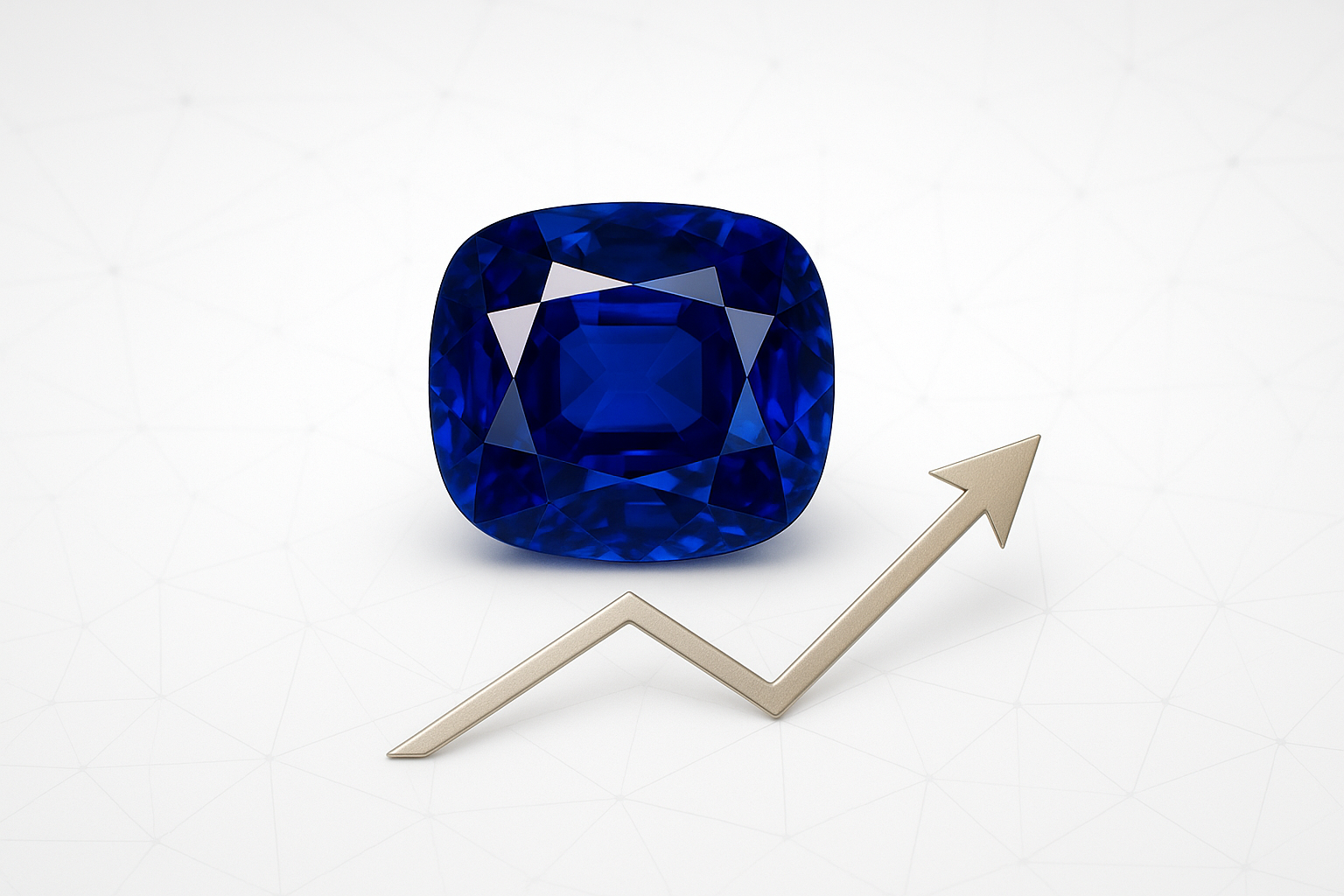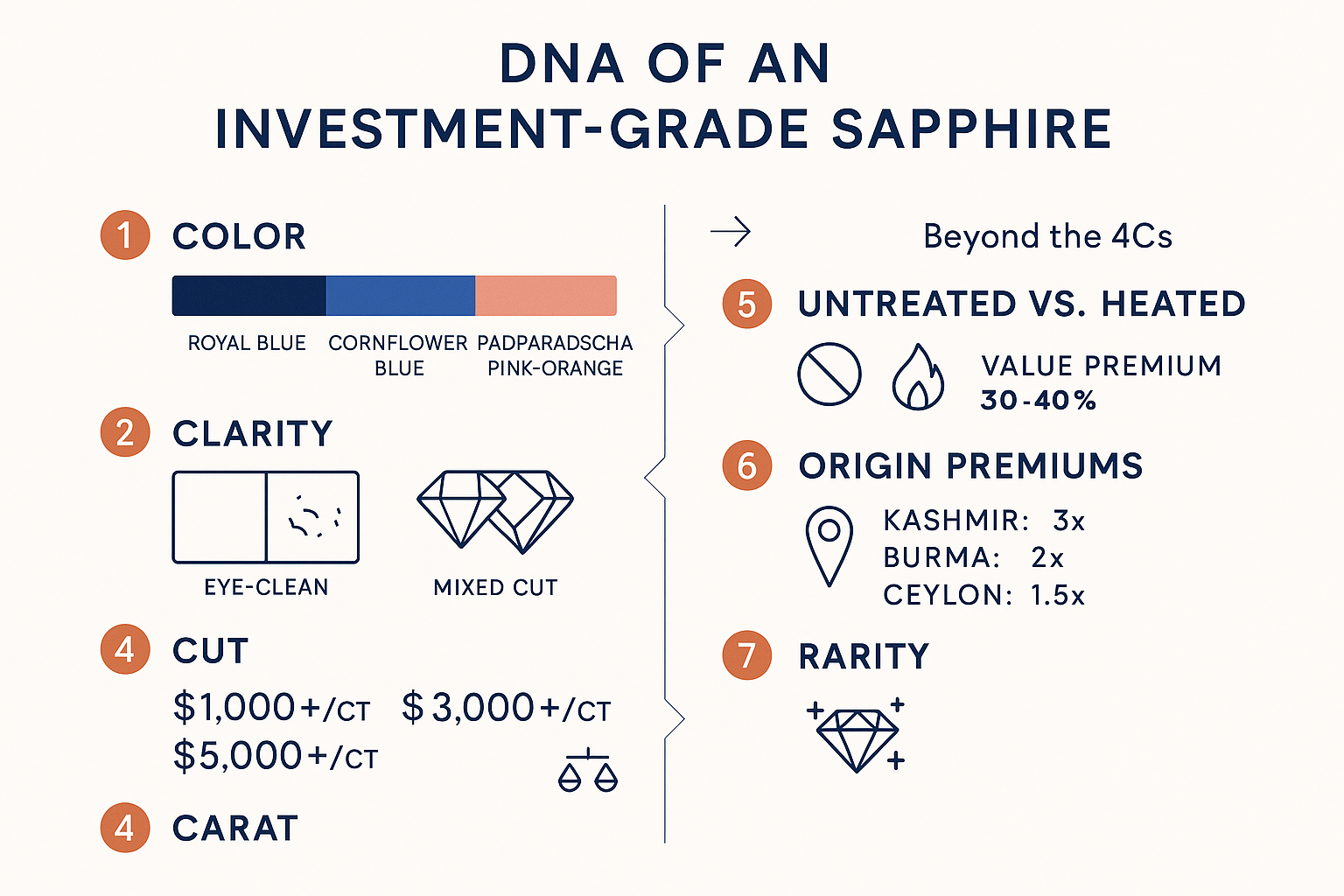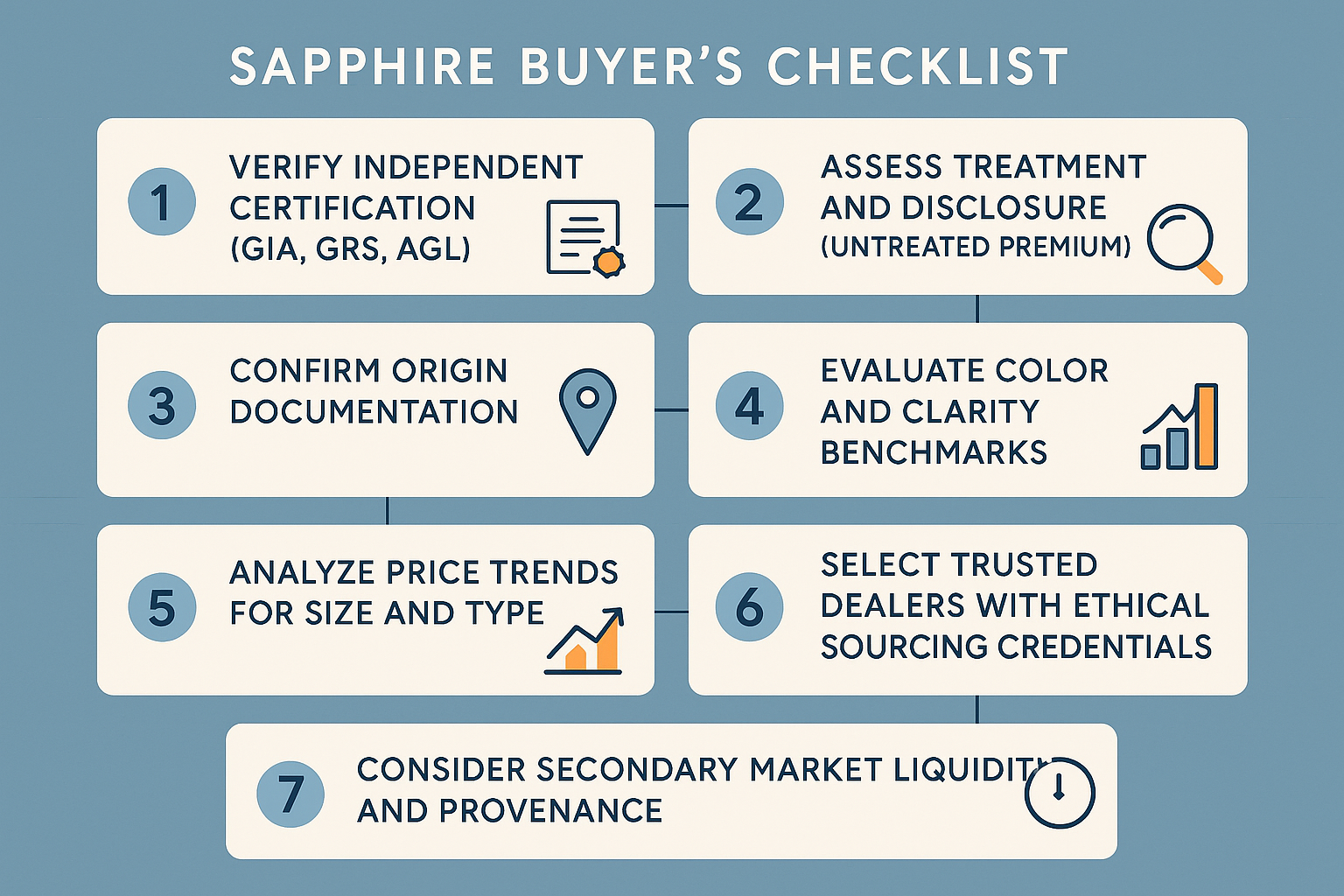
Your opinion is important to us!
Help us improve by filling our quick survey

Mins Read
|
October 7, 2025
Navigating the global sapphire market can feel like trying to find a clear path in a jungle of data. You're constantly seeing high-level reports from market research firms, fragmented advice on forums, and sales pitches disguised as educational content. For a discerning investor or jeweler, this noise makes it difficult to distinguish genuine opportunity from speculation. You need a trusted guide who can cut through the complexity and provide a clear, actionable framework for making confident decisions.
This analysis is that guide. We’ll move beyond the surface-level numbers to explore the fundamental drivers of sapphire value, project future trends for the most coveted investment pieces, and provide a strategic outlook to help you secure assets with long-term appreciation potential.
The global sapphire market is on a trajectory of robust growth, with projections showing its value potentially doubling from around $13 billion in 2024 to as much as $15-$25 billion by 2035. This expansion, marked by a steady compound annual growth rate (CAGR) of 6-9%, isn't just fueled by luxury demand; it's also underpinned by sapphire's critical role in high-tech industrial applications.
This creates a unique market dynamic. On one side, the rapidly growing synthetic sapphire market—projected to reach $8.9 billion—is driven by its use in smartphones, LEDs, and medical devices. This industrial demand establishes a strong, foundational value for corundum as a material.
However, for investors, the real opportunity lies in the distinct and appreciating world of natural, gem-quality sapphires. While the synthetic market grows on volume, the natural gemstone market thrives on rarity, beauty, and provenance. It is here that true, lasting value is built.

Distinguishing a good sapphire from a great one requires looking beyond the standard 4Cs. An investor needs to understand the nuanced factors that create exceptional value and drive long-term appreciation.
While color, clarity, cut, and carat weight are foundational, their interplay is what determines investment potential.
These three factors are where astute investors find their edge.
Within the sapphire family, two categories stand out for their remarkable investment performance and future potential.
Named after the Sinhalese word for "lotus blossom," the padparadscha sapphire is defined by its delicate, unique blend of pink and orange. This extraordinary rarity makes it one of the most sought-after colored gemstones in the world.
Unheated blue sapphires are the bedrock of the gemstone investment market. Their timeless appeal, combined with increasing rarity, has led to impressive performance.

The modern investor is increasingly sophisticated, looking beyond the stone itself to its journey. This shift is creating new dimensions of value.
Ethical Sourcing & Traceability as a Value Driver:Today, provenance is more than just a location on a map. A verifiable, transparent supply chain is becoming a critical component of a gemstone’s value proposition. Investors in Europe and North America, in particular, are placing a premium on ethical sapphires with a clear, documented path from mine to market.
This isn't just about social responsibility; it's a strategic move to de-risk an investment. A stone with a documented, ethical origin is insulated from future regulatory shifts and appeals to a broader, more conscientious market, strengthening its long-term liquidity and desirability.
With this knowledge, you can approach the market with a clear strategy. Here is a simple framework to guide your evaluation process:
How do I verify a sapphire is truly unheated and natural?
The only reliable method is through a certificate from a major gemological laboratory. Labs like GIA and GRS use advanced testing to detect microscopic evidence of heat treatment. A trusted supplier will always provide this documentation upfront. You can further educate yourself on the grading criteria with a comprehensive sapphire quality chart.
Is the synthetic sapphire market a threat to natural sapphire investments?
No. The two markets are fundamentally different. The synthetic market serves industrial and mass-market jewelry needs, valuing uniformity and low cost. The natural investment market values rarity, uniqueness, and provenance. The growth in synthetic manufacturing has no bearing on the scarcity—and therefore the value—of a fine, unheated Kashmir sapphire.
What is the single most important factor for long-term value appreciation?
Rarity. Every other factor—color, clarity, carat weight, origin, and lack of treatment—is simply a component of rarity. The rarest combinations of these factors will always command the highest prices and experience the most significant long-term appreciation.
Beyond sapphires, what do current certified gemstones market trends suggest for portfolio diversification?
The trend toward tangible, portable assets is strengthening. High-quality, certified gemstones market trends show increasing interest in assets like rubies, emeralds, and spinels as a way to diversify beyond traditional securities. Fine colored gems are increasingly seen as a stable store of value in volatile economic times.
The global sapphire market presents a clear and compelling opportunity for those who know where to look. The fundamentals are strong, driven by enduring demand for luxury and essential industrial applications. For the investor, the path to success lies in focusing on the rarest and most beautiful natural gems—untreated stones with exceptional color and verifiable, ethical origins.
By applying a disciplined evaluation framework and partnering with a transparent source, you can confidently add this appreciating asset class to your portfolio.
Ready to explore your options? Browse our curated collection of investment-grade sapphires sourced directly and ethically from the mines of Sri Lanka.
Sign up to our newsletter now and get it directly to your mailbox.
CEYLONS | MUNICH stands for the finest Ceylon sapphires. A brand committed to responsible mining of Sri Lankan gemstones obtained in an ethical manner.